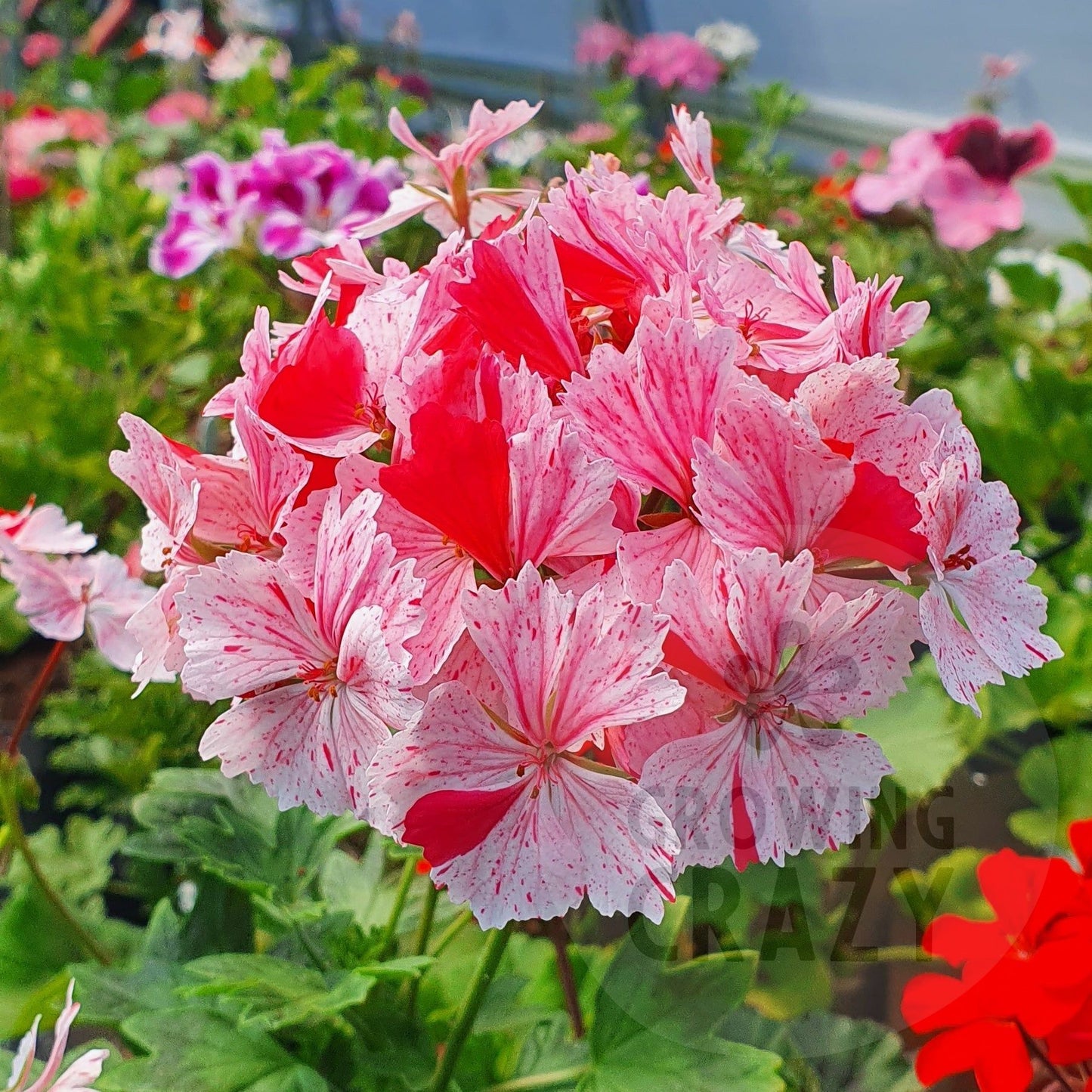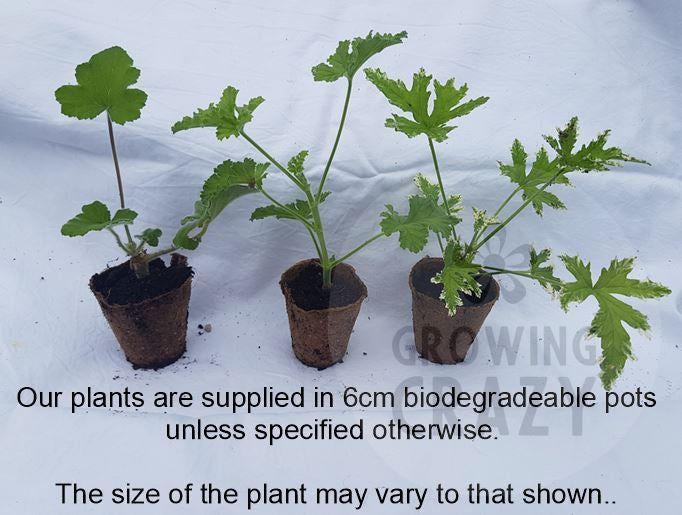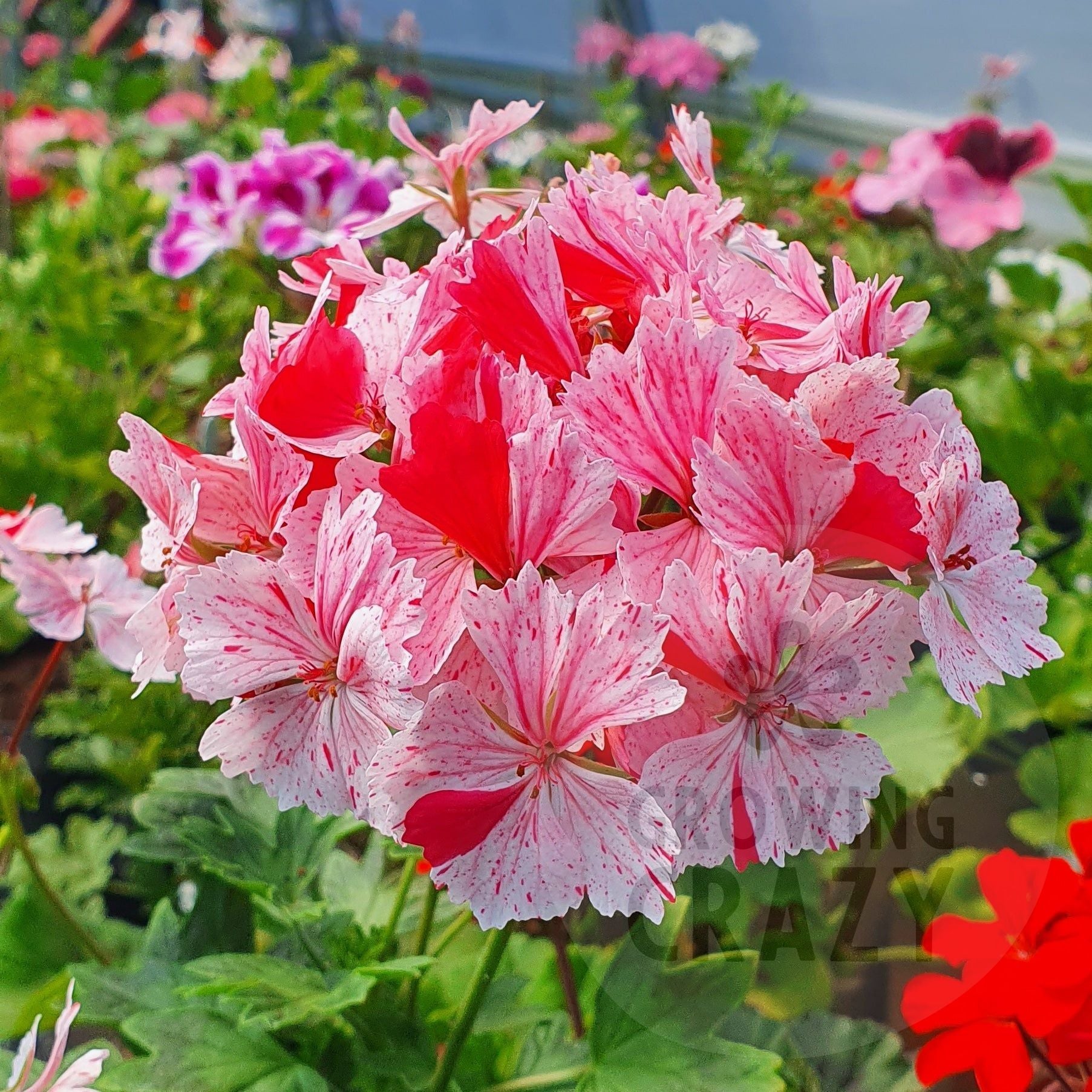Growing Crazy
Vectis Volcano - Stellar Pelargonium (Geranium) Plant - 6cm bio pot
Vectis Volcano - Stellar Pelargonium (Geranium) Plant - 6cm bio pot
Pre-order now for March 2026 dispatch
Couldn't load pickup availability
Vectis Volcano Stellar Pelargonium provides an eruption of well rounded flowers with flushes of pink speckling and splashes of red, this variety is nice and compact and puts on a great display.
Another fantastic variety raised by Brian West who was from the Isle of Wight. He used the pre-fix "Vectis" on many of the Pelargoniums he bred as Vectis was the old Roman name for the Isle of Wight. Stellar Pelargoniums are one of the younger of the groups having been introduced from Australia in the 1960s and 70s.
Stellar Pelargoniums were bred in Australia during the 1970s, which mean these plants are a relatively recent addition to the world of Pelargoniums, but they've already captured the hearts of plant lovers everywhere.
With their delicate foliage and stunning flowers, Stellar Pelargoniums (Geraniums) are unlike anything that came before them. Their range of flower shapes and colors is truly breathtaking - you'll find everything from vibrant reds and pinks to soft pastels and creamy whites. These plants are true blooming machines, with some producing as many as twenty blooms (bursting out like fireworks or starbursts on a single, modest plant!
Despite their delicate appearance, Stellar Pelargoniums are tough and resilient, making them an ideal choice for container gardens or as summer bedding. They're also some of the first Pelargoniums to start blooming in the spring, and they'll keep going strong all season long.
These plants are supplied in a 6cm biodegradable pot which you can put straight into the pot or location you wish. As time goes on the pot will simply compost down and the plant will happily grow on.
Position: Sunny
Hardiness: Requires protection from frost
Growing media: A loam based compost or a good quality multipurpose compost.
Growth/Shape: Fast growing, bushy (40cm x 50cm) w x h
Flowering period: Apr - Sept
How to care for your plant:
Share






